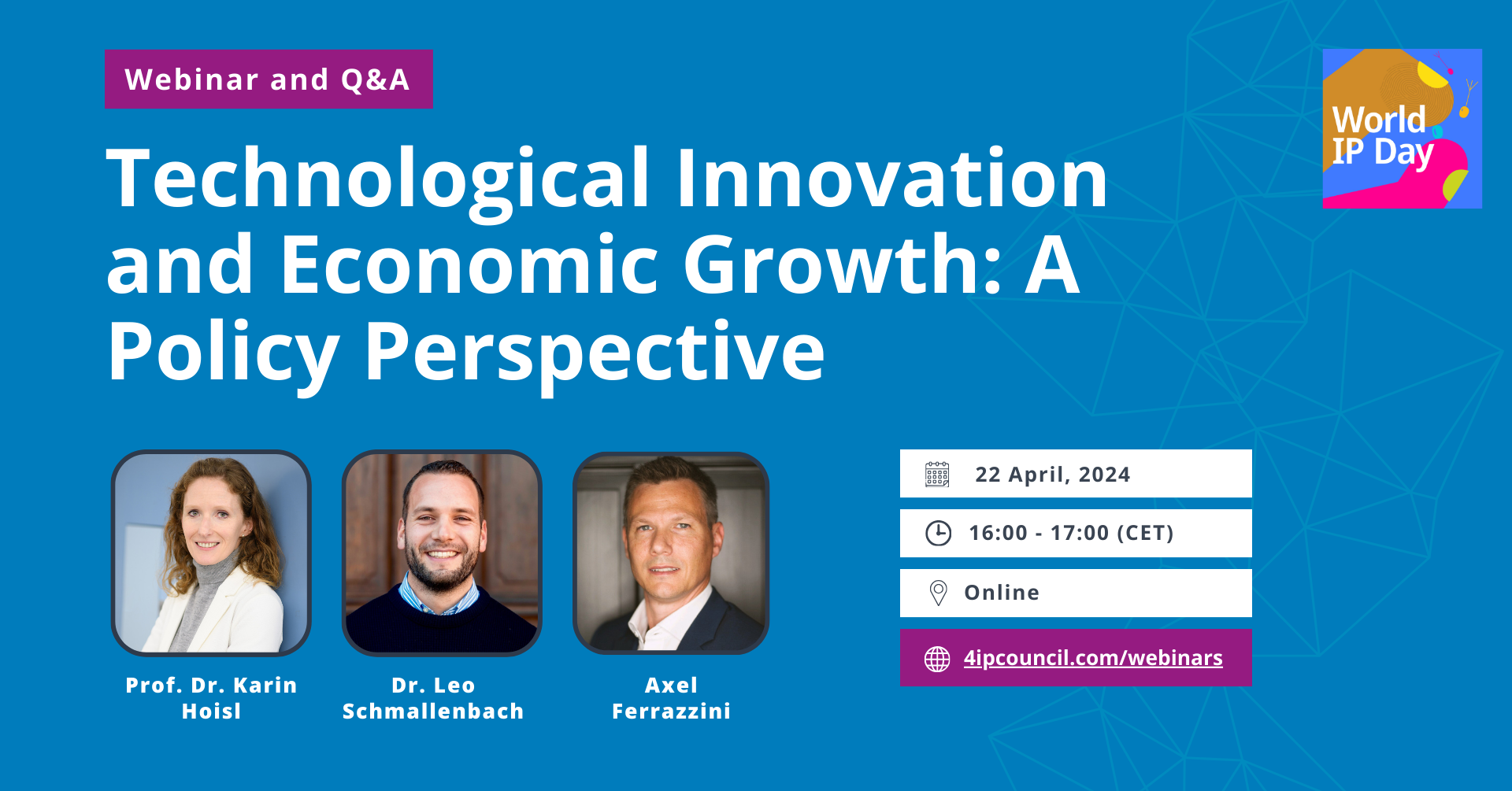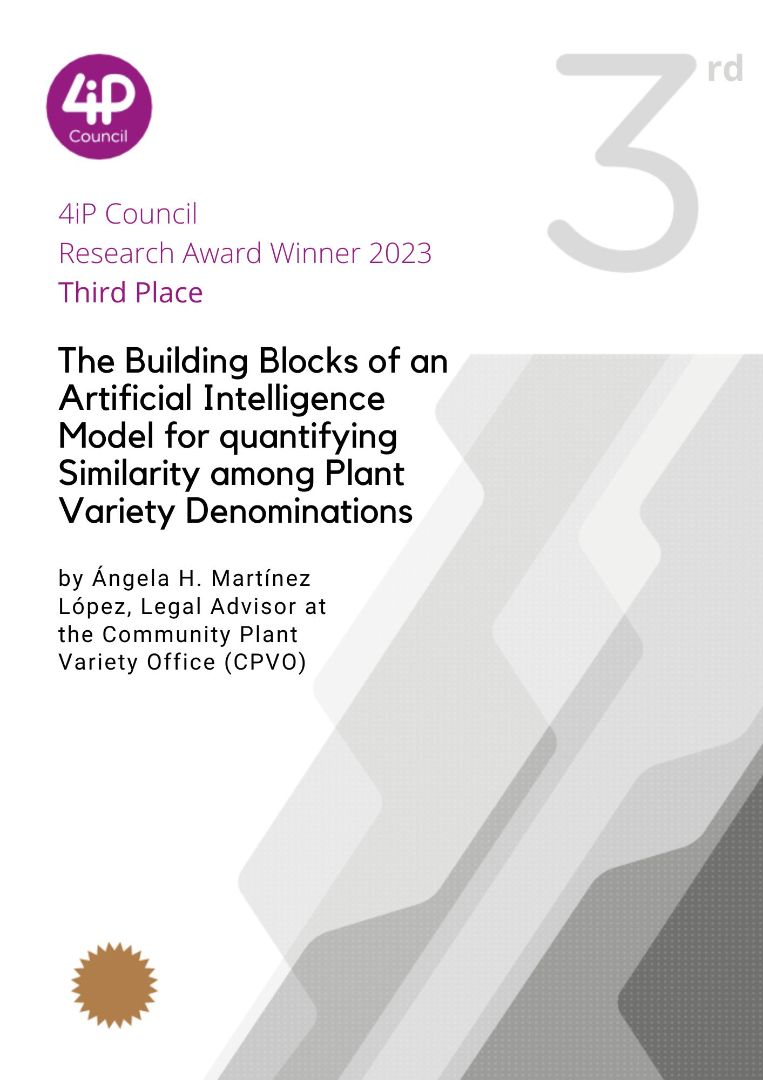Paper by Rudi Bekkers et al. [1]
Executive Summary by 4iP Council
The present study, commissioned by the European Commission (EC), investigates the technical and institutional feasibility of a large-scale system that seeks to achieve better essentiality scrutiny for Standard Essential Patents (SEPs). A combination of approaches was applied for this purpose, including:
- Case studies;
- A specific investigation to explore the potential of automated systems in the context of essentiality assessments;
- A landscape study on potential SEPs disclosed at Standards Developing Organizations (SDOs);
- A pilot experiment to investigate technical feasibility, in which 28 persons, in collaboration with 6 European patent offices, spent 176 working days performing 205 SEP assessments; and
- An interactive process that included a stakeholder workshop with 23 participants to learn about institutional feasibility.
The following are the key findings obtained from those methodologies.
Concept and meaning of essentiality
Even if essentiality is a binary concept, the assessments are not a simple 1/0 exercise. Essentiality assessment is a complex process which depends on many factors, such as the precise definition of essentiality, that varies across SDOs; which version of the standard is investigated; and the meaning and interpretation of technical vocabulary. However, there is a broad understanding on how essentiality should be understood, and parties of the pilot experiment were happy to work with a common definition.
Actual essentiality can only be determined once the standard document in question is final, and once the patent in question is granted.
The concept of patent essentiality differs from patent validity, patent enforceability, or patent value, even if they are related to each other and are all important in licensing negotiations. Patent essentiality differs from patent infringement as well.
The patent claims determine the scope of exclusive rights conferred by the patent, and therefore determine the essentiality as well. Moreover, standards must be drafted in a way that allows for a clear determination of the parts of the text which are mandatory, and the parts which are optional normative elements.
Finally, an alternative approach to the regular essentiality definition is proposed, guided by the question: "assuming that the text of the standard would have already been disclosed before the patent was filed, would the patent still meet the novelty requirement?".
Existing essentiality assessment mechanisms
None of the existing assessment mechanisms establishes a formal legal status of essentiality. Essentiality can be legally determined only by courts.
In terms of time for assessment, an approximate range from 0.3 to 6 person-hours per individual patent is used for commercial studies, and 2 to 3 person-days for patent pools. Assessments are usually carried out by technical engineers, patent attorneys and patent lawyers. Costs range from 300 to 10.000 euros per patent. There is a link between time spent, cost and reliability. Although large-scale commercial essentiality assessments performed by experts are not perfect, and sometimes subject to flaws, courts have held that they have merit.
Market parties have not made use of the Japanese advisory opinion for essentiality, known as Hantei-E (as of 10 March 2020). The main reasons are the several stringent admission criteria, the fact that the test itself is narrowly designed, and that only one single patent is investigated, which means no insights are generated on essentiality at the portfolio level.
Patent pools have the most sophisticated systems for essentiality assessments, due to: their voluntary character for patent owners; the key role of claim charts; the fact that the assessment is outsourced to independent, specialist third parties; and the well-developed appeal processes in place. The outcomes are considered highly accurate. Therefore, an essentiality assessment system can learn from the pools’ model. Particularly, claim charts play a key role in high quality and efficient essentiality assessments, so their availability is required.
Finally, there are substantial differences in comparable essentiality rates across firms and technology generations, which suggests that there is need for transparent information on essentiality.
Artificial Intelligence (AI)-based approaches
The study has explored the possibility of using AI and other automated approaches for essentiality assessments. Such approaches are promising and might be valuable for efficiency in the process, for instance, by helping to achieve higher quality or smaller resource requirements. However, they will not be able to replace human efforts in the short or medium term, since there are still challenges in the training of the AI system, and in the availability of the relevant training dataset. Moreover, other challenges, such as anticipation and acceptance of the AI system by the stakeholders, may emerge.
Technical feasibility
The pilot experiment confirmed that essentiality assessments on a large scale, where approximately 7 hours are spent per assessment, are technically feasible. The most consistent results are achieved by individuals who work at a patent office as examiners and are provided with a claim chart (consistency rate 84 per cent), while assessors that work as senior engineers in academia score below (consistency rate 75 per cent).
There are four factors that would lead to higher consistency scores. Firstly, the performance in essentiality assessment would increase if assessors were allowed to communicate with the patent owner in order to ask for clarification, consult additional information sources, and discuss cases with colleague assessors. Secondly, in an actual implementation there would be more opportunities to develop specializations amongst assessors. Thirdly, there are reasons to expect significant learning effects from specialized training both at the individual and group level. Finally, the system should implement features that improve accuracy, such as allowing parties to challenge the result of the assessment.
Institutional feasibility
Many stakeholders, such as implementers, patent owners and courts, expressed a clear interest in increased availability of transparent data on the essentiality of patents. The study distinguishes five types of transparent data on essentiality that might be valuable: numerator, denominator, validated summary claim charts, detailed assessment outcomes, and current ownership data. Furthermore, SDOs have expressed interest in information on actual essentiality.
A system for essentiality assessment should not strive to generate a single set of aggregated, statistical numbers, but should instead make the underlying data points accessible so that the user of the data, using relatively simple filters, can create the information that is relevant for use in a business context.
In addition, the study identifies nine scenarios for a large-scale essentiality assessment system, and the degree to which these scenarios generate transparent data on essentiality, as well as the degree to which their implementation is feasible. The most promising scenarios are:
- Systematic assessment of all patents disclosed at SDOs. This scenario requires a lot of resources; it is the costliest scenario, but the scheme is entirely independent of stakeholder involvement.
- Assessment of patents where requested by the patent owner. This scenario seeks to actively involve stakeholders and arguably offers benefits if they choose to participate. It opens up the possibility for additional data that can help licensing negotiations to become smoother and faster. It is also likely to increase overall support for the mechanism.
- A scenario that combines the previous one with a system to collect sample data on patents disclosed by non-participating firms, which could thereby achieve greater transparency.
Stakeholders of different kinds support a system for essentiality assessment. Therefore, it is concluded that setting up a system for essentiality assessment is institutionally feasible.
Recommendations
There is interest from stakeholders in having transparent data on the essentiality of patents for standards. Such data can provide important benefits, and the system for generating such data seems both technically and institutionally feasible. Focus on the following points can help towards achieving these goals.
- Policy makers may pursue the development and implementation of a system for essentiality assessments. It is important to formulate the precise requirements of such a system, to identify the demand for a specific design, and to assess its impact. The three most promising scenarios described above should be carefully considered as possible bases for the system’s design. Furthermore, policy makers should consider the various business and licensing models of SEP owners, and engage with all stakeholders in the process, as acceptance is a key success factor.
- Policy makers must recognize the specific situation of SMEs as well. It is important that transparent information on essentiality is available at the product category and optional feature levels, enabling them to determine the relevant SEPs for specific products.
- The European Commission should arrange for a small supervising body to design and define the procedures to oversee the system, to harmonize internationally, and to have overall responsibility for quality and performance. A certification scheme is a good way to ensure that the assessment is performed in a harmonized manner and meets the requirements for reliability, impartiality, quality and performance.
- A self-financing system for essentiality assessment in which all benefitting stakeholders contribute should be strived for.
- The use of AI to support essentiality assessments in the future should be explored. The starting point is to arrange essentiality assessment records to be collected so they can be used for developing AI systems for this specific task.
- SDOs should implement improvements in their disclosure rules and procedures, and in access to disclosure data. Improvements are especially important in data specificity, data quality, and in keeping data up to date.
- All stakeholders should adopt a constructive and collaborative stance towards the potential creation of a system for essentiality assessments.






